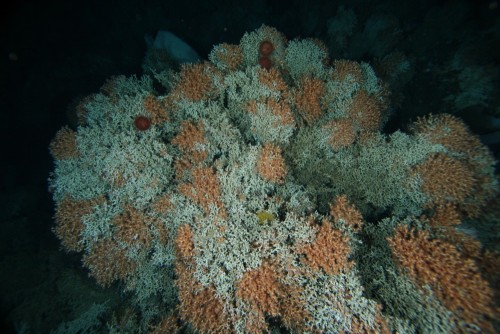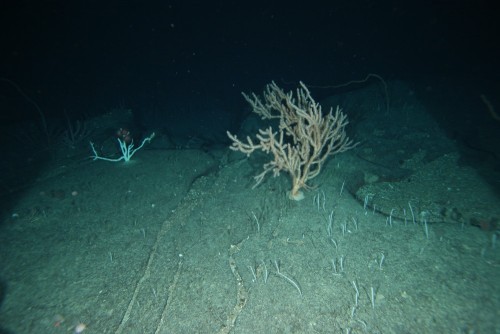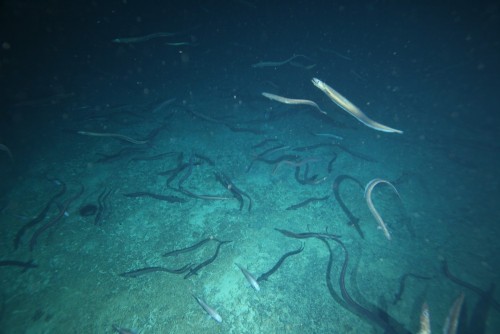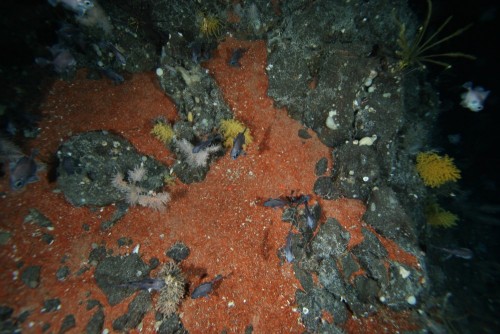Where
Who
CSIRO
When
April 2007
Why
Seamounts in the Huon Marine Park are the cone-shaped remnants of submarine volcanoes. They are important ecological features as their hard substrata creates a hotspot of species diversity and abundance in the typically flat and muddy seascape of the deep ocean. Whilst the Huon Marine Park encompasses almost all of Australia’s largest known seamount cluster, little is yet known about the ecosystems these seamounts support. Increasing knowledge of these ecosystems is important to help manage and protect these unique benthic communities.
How
In April 2007 CSIRO scientists used multibeam sonar to map over 2200 square kilometres of the Huon Marine Park and adjacent seafloor. Additional surveys on selected seamounts were carried out using photographic transects to identify habitat types, species assemblages and community extents and distributions, and to help estimate community resistance and resilience though investigating age, growth rates, size and fragility of the key species.
What did we learn?
Mapping revealed 123 seamounts between the 1000–2000 metre depth contours, many of which were previously unknown. On these seamounts at least 418 species of coral, sponges, crustaceans, seastars and molluscs were identified, about 66 percent of which were believed to be new to science. Extensive areas of stony cold-water coral reef supported a key community type on many seamounts to depths of 1400 metres. These habitats play a role similar to their tropical shallow-water counterparts, providing a habitat for a diverse array of invertebrate and fish species. Within these communities were large bamboo corals, growing over 2 metres tall and believed to be at least 370 years old. Deposits of a rare lead-chromite crystal - crocoite - were observed on one seamount; this had been known only from terrestrial mines until then. A spawning aggregation of basketwork eels was also discovered on one of the seamounts within the reserve, and constitutes the only known spawning aggregation of deep-sea eels in the world.
What next?
A planned survey in 2018 will return to the seamounts to better determine the extents of deep-sea coral communities in and adjacent to the Huon and Tasman Fracture marine parks, and quantify changes in the communities by comparing samples to those taken in 2007 and an earlier survey in 1997. This information will help answer questions about the dynamics of deep-sea communities globally, and be used to inform development of effective conservation management plans.
Related publications
Williams, A. & Crosswell, L. (2007) Seamount Ecosystems conserved in the Huon Commonwealth Marine Reserve. Poster for the Minister for the Environment
Rowden, A.A., Schlacher, T.A., Williams, A., Clark, M.R., Stewart, R., Althaus, F., Bowden, D.A., Consalvery, M., Robinson, W. & Dowdney, J. (2010) A test of seamount oasis hypothesis: seamounts support higher epibenthic magafaunal biomass than adjacent slopes. Marine Ecology 31(s1): 95-106.
For more information please contact marinescience@environment.gov.au.






